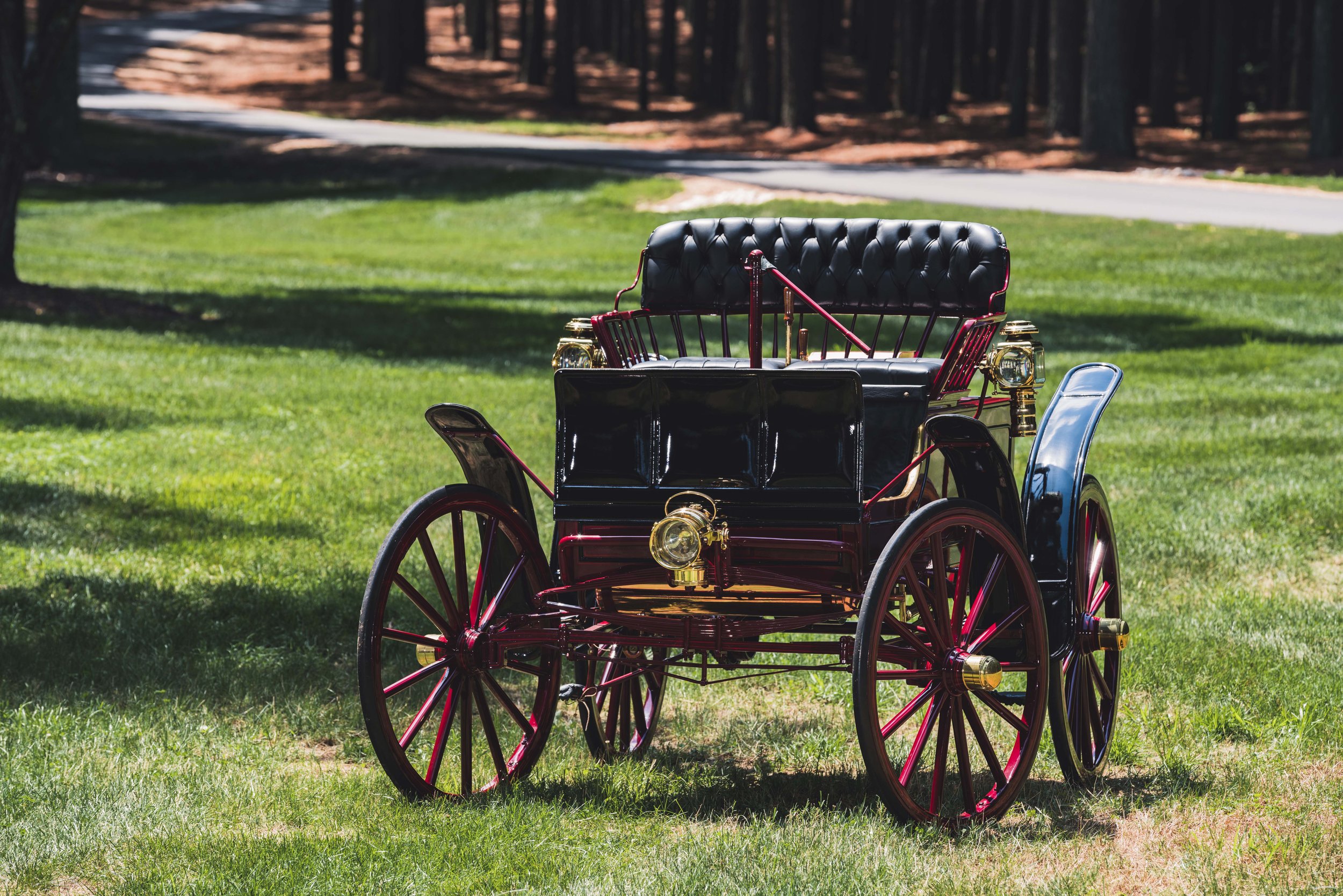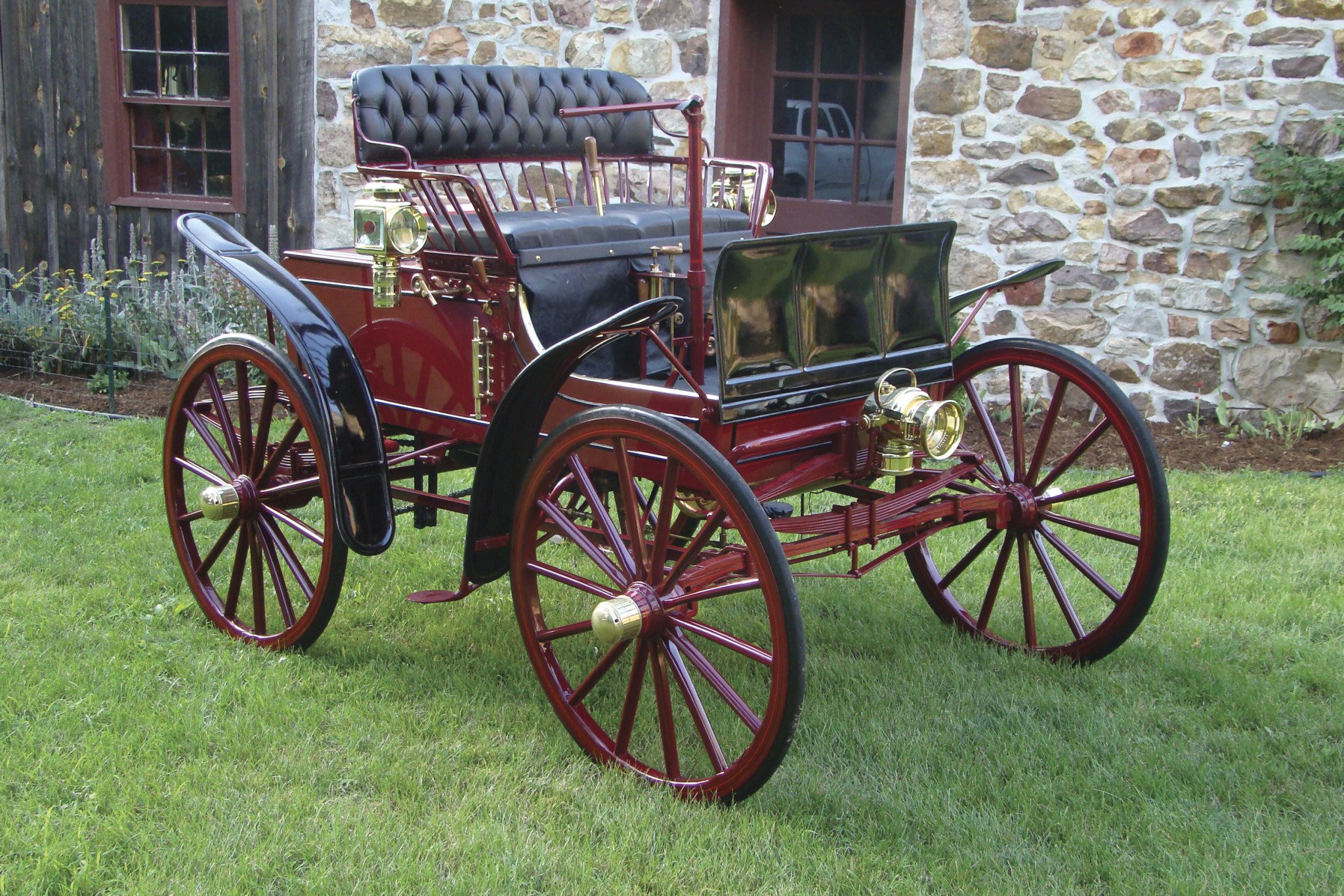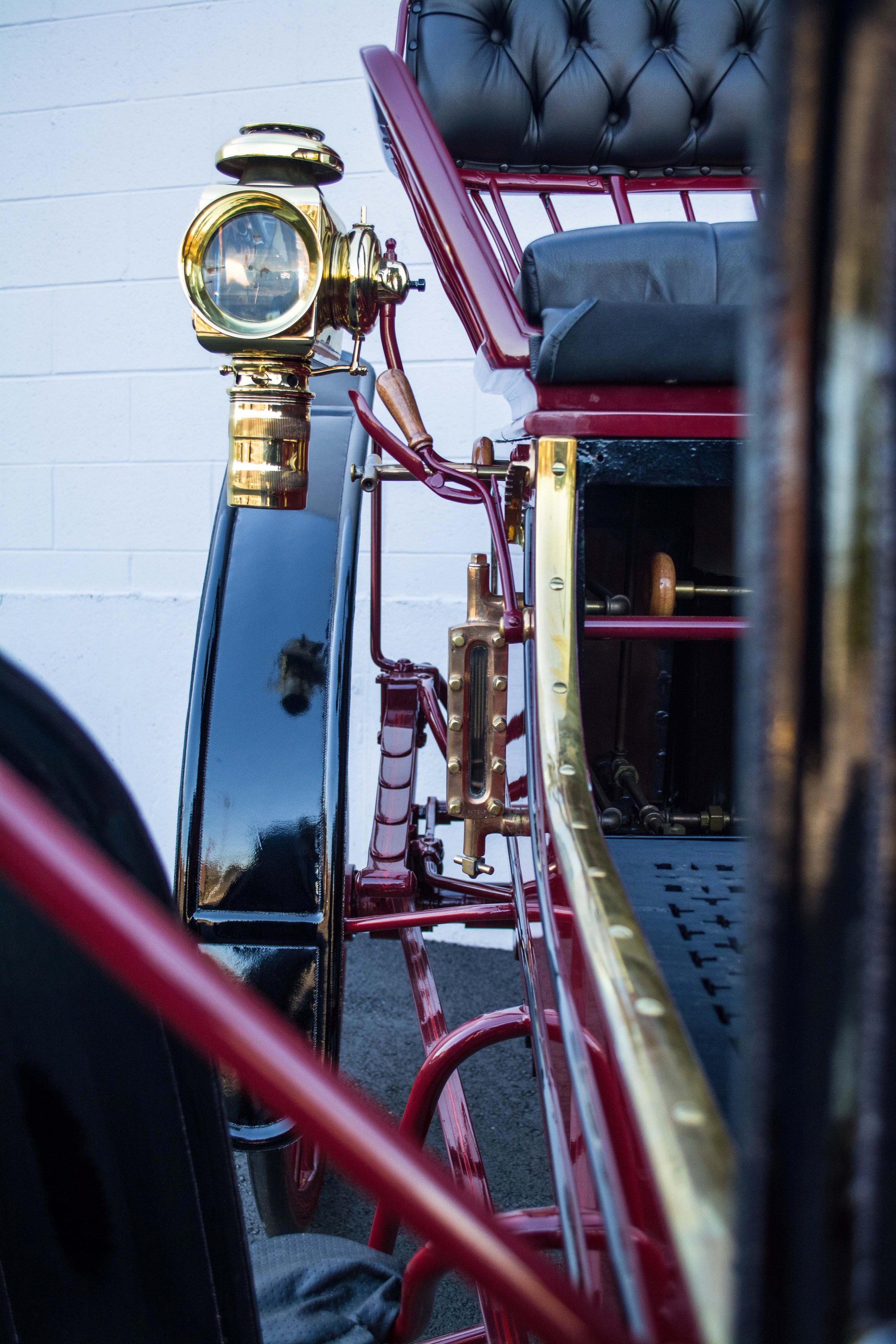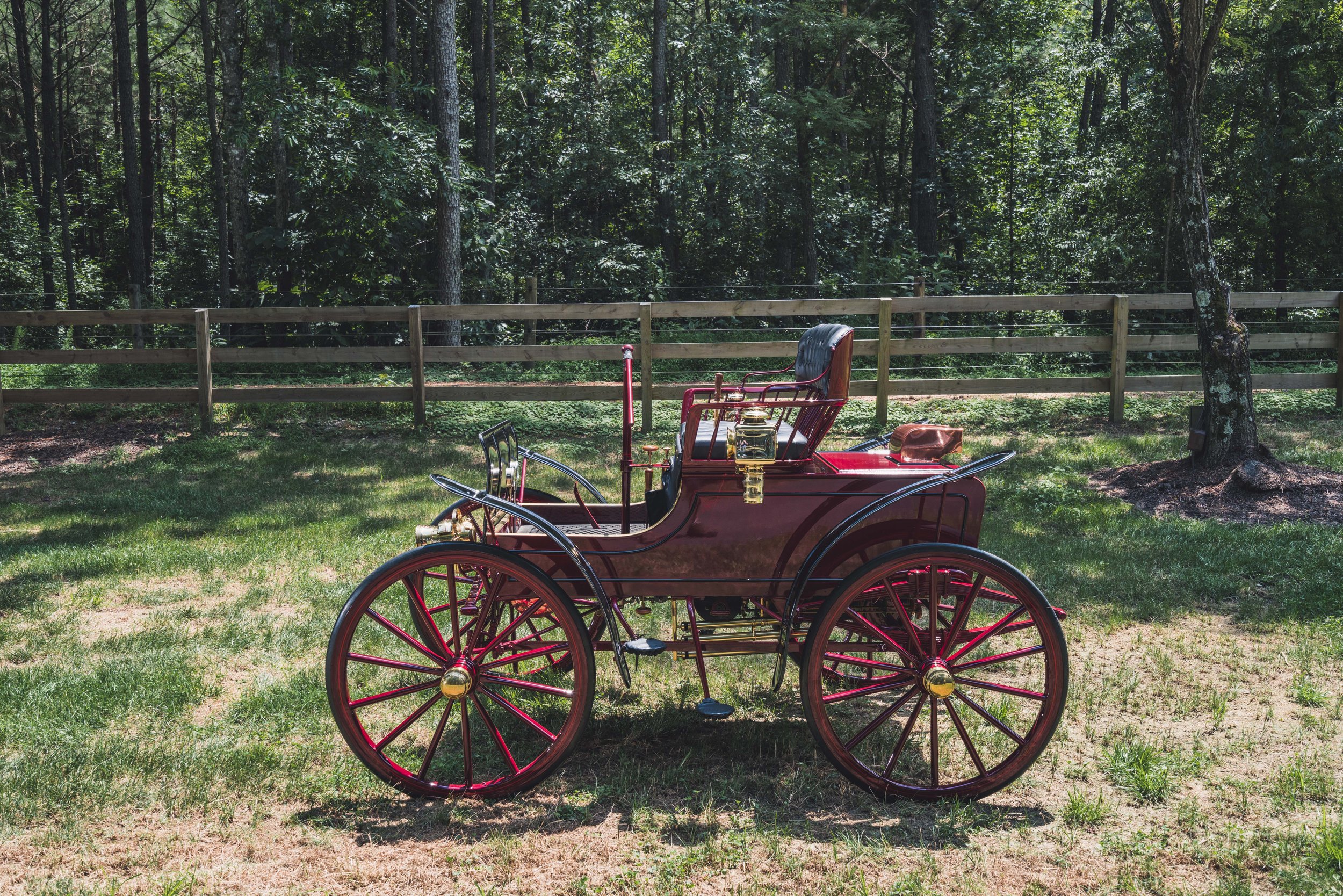1899 Crouch Steam Runabout





One of the earliest usable steam vehicles, produced within a year of the first Locomobile
Effective “toy sized” two-cylinder produces 14 horsepower
During the 1890’s when the automobile first started to become an option for personal transportation, steam powered cars were prominently established as one of the most reliable and popular propulsion methods. Crouch Automobile Manufacturing and Transportation Company were one of the many steam car manufacturers in the Northeast, and while Crouch didn’t last long before being purchased by the Columbia Motor and Manufacturing Company, their product was extremely efficient. Crouch produced just three cars in their brief independent period, and it is believed that this example on display is the sole remaining Crouch!
While internal combustion engines powered by gasoline were newly established in the late 19th century, steam engines had already been in service for decades in both boats and trains. While steam engines required lots of attention, they offered safe, silent, and reliable transportation. In 1902, more than half of new automobile registrations were for steam cars, proving that it was the most popular propulsion method at this time. However, internal combustion engines became much more efficient and overtook steam as the popular engine type, and after 1910 there were very few steam car manufacturers left in business.
W. Lee Crouch began building automobiles in a small machine shop in 1895 in New Brighton, PA, building his first gasoline powered automobile in this shop, before moving the company to Baltimore. Just two of the three cars that Crouch built were powered by a steam engine, believed to be adapted from a small marine engine at the time. The company was purchased shortly after by the Columbia Motoring and Manufacturing company, and the early Crouch cars were all but forgotten, like hundreds of other car companies of the period. Apparently, this Crouch was found decades later in the basement of the Baltimore factory during World War II, sold to a scrapper, and subsequently saved!
At the turn of the 20th century, there were hundreds-if not thousands-of small automobile manufacturers across the globe, and as the decades passed, many of them dwindled as successful businesses grew into corporations. Many of these early companies built steam or electric vehicles, making up most of the market before gasoline powered vehicles became the norm.
Specifications:
Engine: Steam, Twin-Cylinder
Horsepower: 14
Top Speed: 25 MPH

